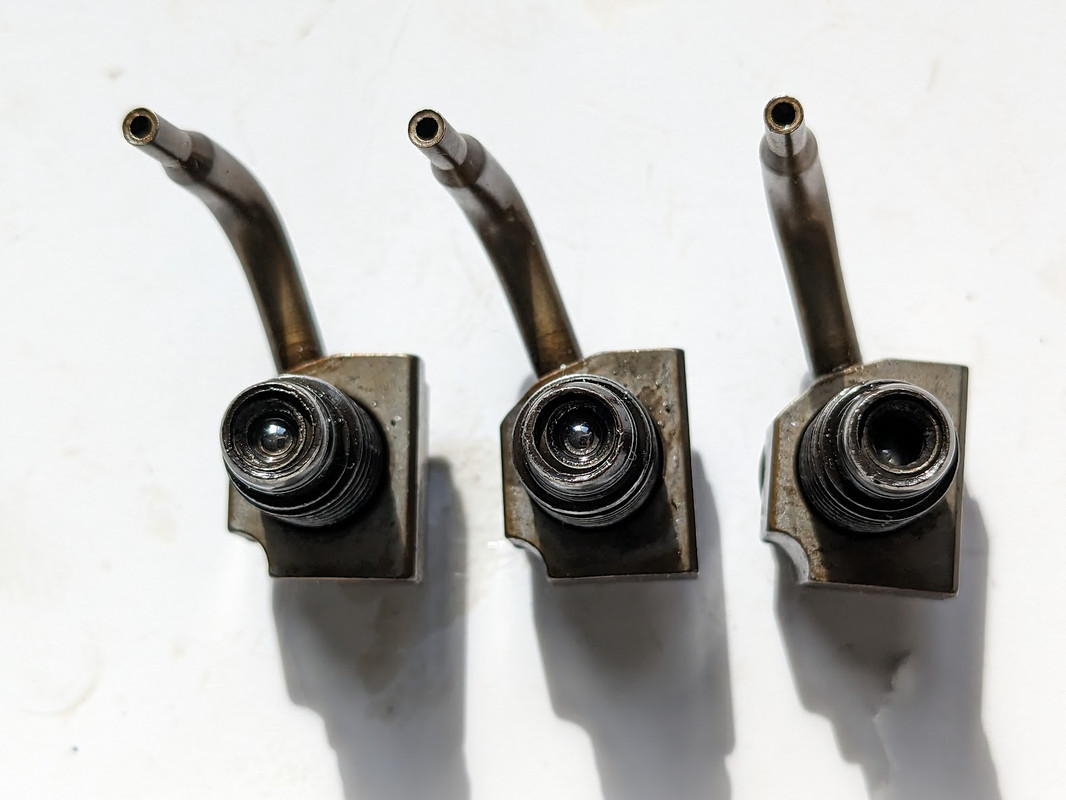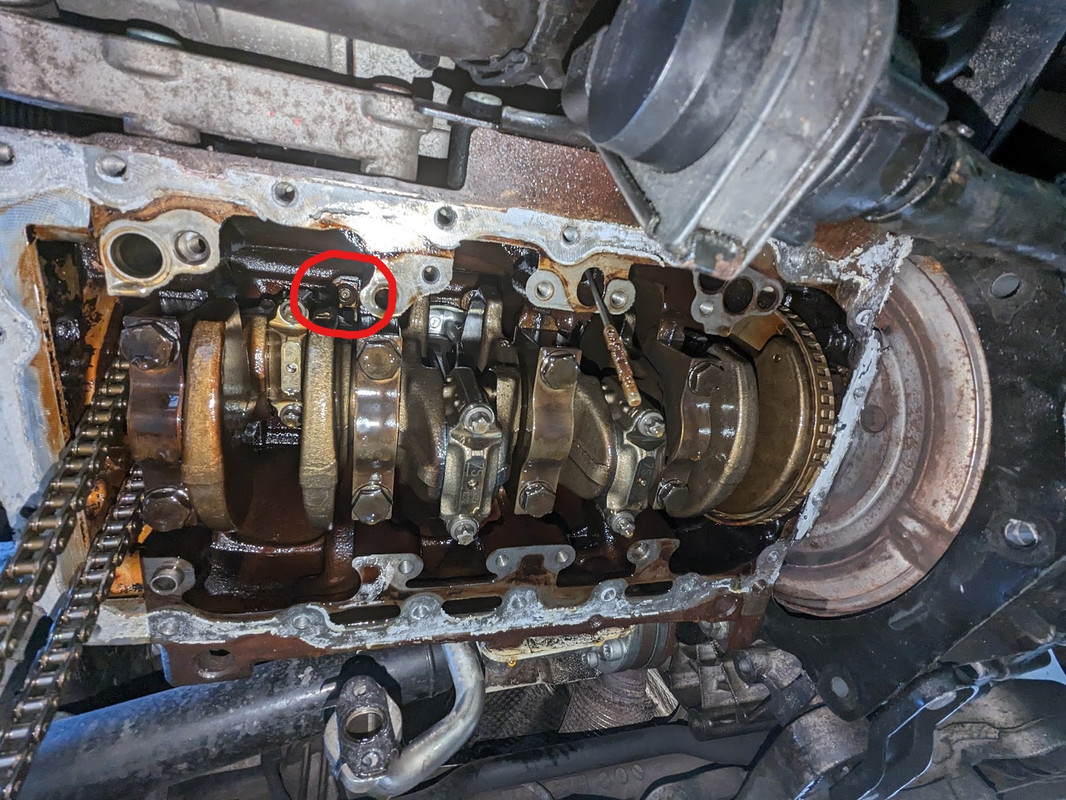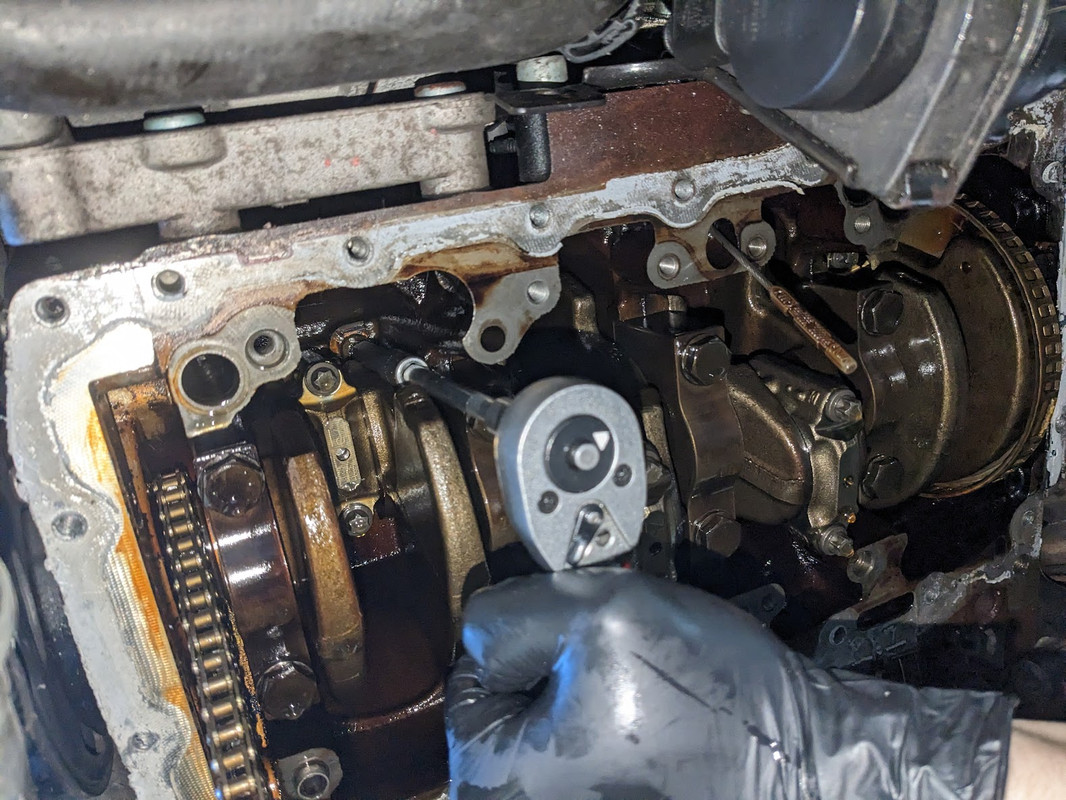Low Oil Pressure at Idle HOW TO FIX GUIDEThis is a guide for people diagnosing low oil pressure only at idle specifically, who have already measured their oil pressure with a mechanical gauge tool. This is not a guide for those experiencing insufficient oil pressure at 2000 or 3000 RPM, your problem likely lies elsewhere. Using this fix, I was able to raise my idle pressure from 0.8 bar to 1.2 bar.
And of course, I'm not a professional mechanic, just someone who has spent an unhealthy amount of time on internet forums, learning about oil pressure on TFSIs. And I have experience of solving low oil pressure on my own TFSI, using the fix I describe in this guide. So follow this guide at your own risk, and only if you have experience of working with engine internals.
Please read through this guide fully right to the end before disassembling your own engine, as there is info regarding the location of bolts that must be noted before disassembly.
With that out the way, here's what your TFSI engine should be getting with the oil at 80°C. If you can't check this with VCDS, it's about 15 minutes after your dash [coolant] temperature hits 90.
 Oil Pressure Spray Jets
Oil Pressure Spray JetsOnce you've verified it's not a blocked pick-up pipe, loose pump balance shaft end, stuck pump pressure release valve or worn pump rotor mechanism, it's time to look the last possible thing it can be.
Oil Spray Jets, also referred to as oil squirters, are responsible for cooling the pistons at higher RPMs to dissipate heat, by spraying the pistons' undersides with oil. They open via a ball-spring mechanism, a spring that can weaken or collapse with age and mileage, causing the ball-spring mechanism to open too easily or even stay open. As the mechanism is supposed to open at higher RPMs, the failure of the mechanism doesn't affect higher RPM oil pressure, e.g. it has very little to no effect on 2k RPM oil pressure.
Three spray jets are accessible without removing the crankshaft. Here are the three I removed from my engine. As you can see, the one on the right has completely collapsed:

I test all three by stabbing them with a pen, started from the one with the weakest resistance (the collapsed one). The second is weak but still springs back, and the third is more firm. But even the third wasn't as firm or resistant as a new one.
Here's a video of that:
So how do I get to these darn things you now ask?Here's how. You will need to remove the oil pump and set the car in neutral so you can easily spin the crankshaft. Optional but highly recommended, for easier access you can remove the car's wheel on the driver's side and plastic wheel trim to have easier access to the crankshaft nut.
Once all of that is off, this is where they are located. I've only circled one, but there's one in the same spot for each cylinder:


Remember, you can only access the spray jets for the first three cylinders. The fourth is blocked by a timing wheel, but replacing just the three should be enough for a significant idle oil pressure raise.
Now, to actually get these out you will need a
150mm or longer 1/4" wobble-end extension, a
big hex M8 spline bit inside a
10mm hex socket. Make sure you get the spline bit correctly seated inside the head of the spray jet bolt, as it's possible to strip them.
And you will need to rotate the crankshaft backwards and forwards to get the angle just right to get the spline bit in correctly, it has to be very exact. It can be rotated by the 12-sided 19mm crankshaft pulley nut. Once you get the crankshaft at the right angle, you will see why the wobble-end was needed. Even with the optimal angle, you can't get at the spray jet at a completely straight angle, so be very patient with this, it is possible:

Once you get these suckers out, they will more than likely need to be replaced. And
Wasa Motors recommend replacing them anyway once you take them out regardless if they have failed or not, simply because "
the tightening torque will affect the calibration". So take from that what you will.
There are two separate part #s for the oil spray jets:
06F103154A (From VIN 8E-7-088 001) and
06F103154C (Up to VIN 8E-7-088 000). They look exactly the same but are different in price. I would recommend contacting VW or skodaparts.com’s support for assurance. Give them your VIN, and they’ll tell you. My 05/2006 BWA TFSI came with Rev A from factory, but Skoda Parts recommended Rev C.
Torque spec for the spray jets is
27Nm.
Rev A on the left, Rev C on the right. Only visual difference is the shape of the ball on the ball-spring mechanism:
 And that's it! Now you should be able to start reassembly. Few more things to note before putting your precious little TFSI back together:NOTE THE LOCATION OF THE OIL PUMP BOLTS AND WHERE EACH ONE GOES BEFORE DISASSEMBLY
And that's it! Now you should be able to start reassembly. Few more things to note before putting your precious little TFSI back together:NOTE THE LOCATION OF THE OIL PUMP BOLTS AND WHERE EACH ONE GOES BEFORE DISASSEMBLY.
Most of them have 10mm heads but are of different lengths.
And in case you didn't know, you will need replacement oil pump bolts as they're all stretch bolts:
1x WHT 000 360 B
3x N 911 495 01
4x WHT 000 006
1x N 911 496 01
1x N 104 305 02All of these are
15Nm + 90 degrees.
And so is the Oil Pump Sprocket (not Balance Shaft Sprocket) Bolt.
1x N 903 659 0120Nm + 90 degrees.
And the rest is just reverse of removal. Don't forget the plastic oil pump chain cover, this happened to me

Apologies for any grammar or spelling errors, I've been writing this for a couple hours and it's late. Please let me know if I've made any errors in this guide.
And if you're following this guide, I hope you can fix your oil pressure once and for all

Good luck!
-OllieVRS